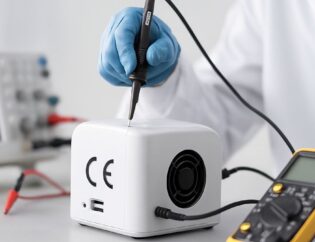
Differences Between Notified Bodies and Accredited Laboratories in the CE Certification Process
The CE Certification and CE Marking process is shaped by technical requirements and the roles of various institutions. Two commonly misunderstood concepts in this process are Notified Bodies and Accredited Testing Laboratories. While both play critical roles in CE conformity, their duties and authorities differ.
What is a Notified Body?
A Notified Body (NB) is an organization authorized by the European Commission to carry out conformity assessments under specific directives or regulations. These bodies are registered in the NANDO (New Approach Notified and Designated Organisations) database.
Roles of a Notified Body:
- Conducting conformity assessment procedures according to CE certification modules.
- Carrying out procedures such as Type Examination (Module B) and Quality Management System Audits (Module D).
- Issuing certification or conformity reports prior to CE marking.
When is a Notified Body Required?
A Notified Body is only needed for high-risk product categories and under specific regulations. For example:
- Medical Devices Regulation (MDR)
- Lift Directive
- ATEX Directive (2014/34/EU)
- Gas Appliances Regulation (2016/426)
For such products, the manufacturer's self-declaration is not sufficient, and a Notified Body assessment is mandatory for CE Certification.
What is an Accredited Testing Laboratory?
Accredited laboratories are authorized by national or international accreditation bodies (e.g., TÜRKAK, UKAS, DAkkS) in accordance with the EN ISO/IEC 17025 standard.
Roles of an Accredited Laboratory:
- Testing products according to harmonized EU standards.
- Performing measurements and evaluations under regulations such as EMC, LVD, RoHS, RED.
- Providing technical reports on test results.
Important Note:
Accredited laboratories do not issue certifications. They only provide test and measurement reports. These reports are part of the technical documentation required for CE Certification.
Key Differences Between Notified Bodies and Accredited Laboratories
| Criteria | Notified Body | Accredited Laboratory |
| Authority Source | European Commission – NANDO database | National accreditation body |
| Role | Conformity assessment, certification | Testing, measurement, and report creation |
| Requirement | Required for certain directives | Preferred where technical requirements exist |
| Document Issuance | Certificate / Conformity Report | Test Report |
| Manufacturer’s Responsibility | Takes responsibility for conformity | Decision-making remains with the manufacturer |
Why is this Distinction Important in the CE Certification Process?
For manufacturers seeking the CE Mark, understanding when a Notified Body is required and when accredited laboratory testing is sufficient is crucial. Choosing the wrong institution can lead to delays in the process or invalid certification.
For more information, contact Sertifike.









